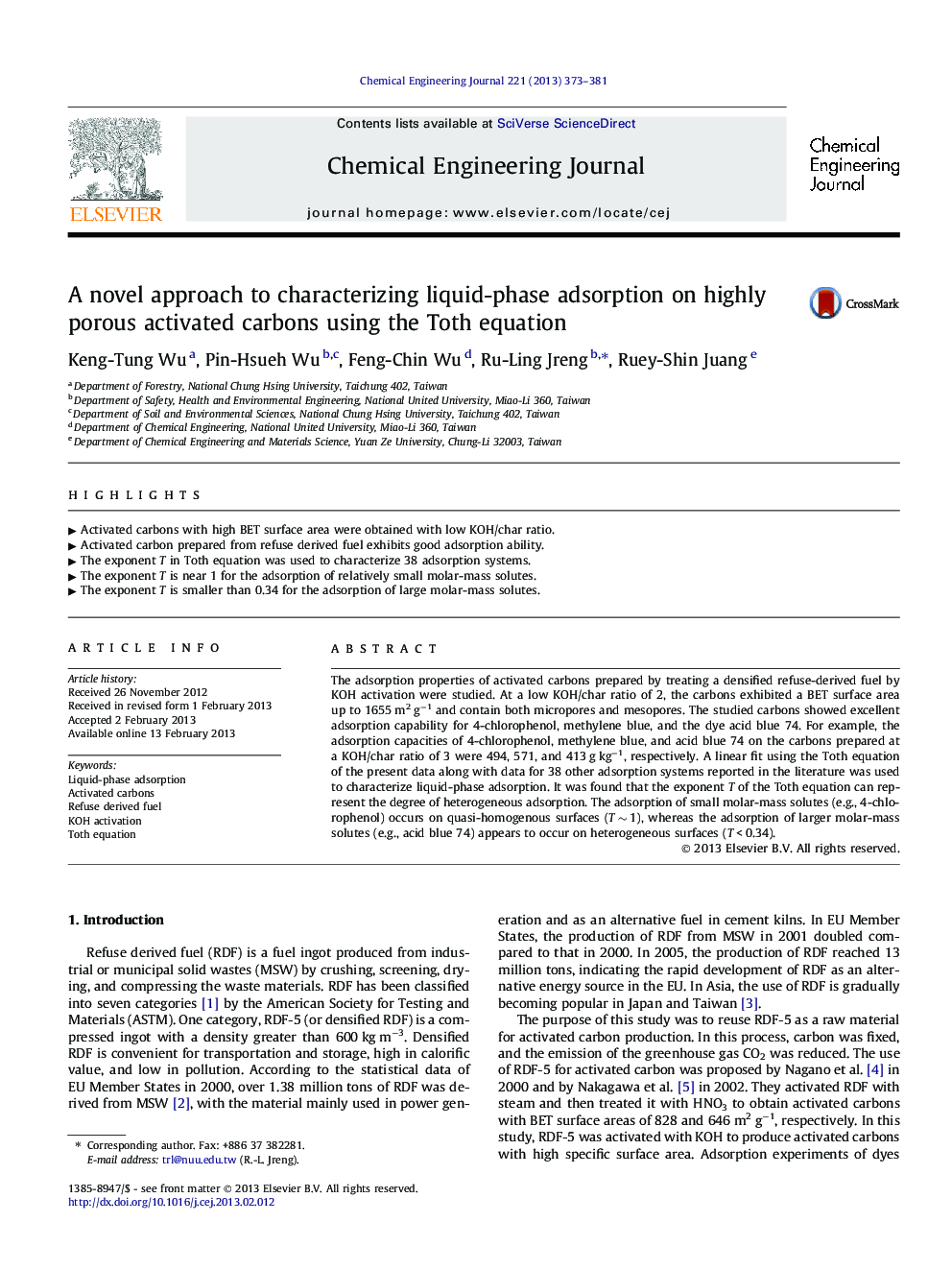| کد مقاله | کد نشریه | سال انتشار | مقاله انگلیسی | نسخه تمام متن |
|---|---|---|---|---|
| 148462 | 456416 | 2013 | 9 صفحه PDF | دانلود رایگان |

The adsorption properties of activated carbons prepared by treating a densified refuse-derived fuel by KOH activation were studied. At a low KOH/char ratio of 2, the carbons exhibited a BET surface area up to 1655 m2 g−1 and contain both micropores and mesopores. The studied carbons showed excellent adsorption capability for 4-chlorophenol, methylene blue, and the dye acid blue 74. For example, the adsorption capacities of 4-chlorophenol, methylene blue, and acid blue 74 on the carbons prepared at a KOH/char ratio of 3 were 494, 571, and 413 g kg−1, respectively. A linear fit using the Toth equation of the present data along with data for 38 other adsorption systems reported in the literature was used to characterize liquid-phase adsorption. It was found that the exponent T of the Toth equation can represent the degree of heterogeneous adsorption. The adsorption of small molar-mass solutes (e.g., 4-chlorophenol) occurs on quasi-homogenous surfaces (T ∼ 1), whereas the adsorption of larger molar-mass solutes (e.g., acid blue 74) appears to occur on heterogeneous surfaces (T < 0.34).
• Activated carbons with high BET surface area were obtained with low KOH/char ratio.
• Activated carbon prepared from refuse derived fuel exhibits good adsorption ability.
• The exponent T in Toth equation was used to characterize 38 adsorption systems.
• The exponent T is near 1 for the adsorption of relatively small molar-mass solutes.
• The exponent T is smaller than 0.34 for the adsorption of large molar-mass solutes.
Journal: Chemical Engineering Journal - Volume 221, 1 April 2013, Pages 373–381